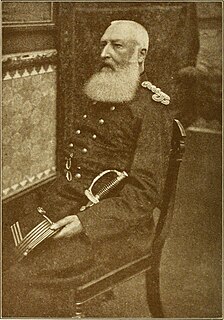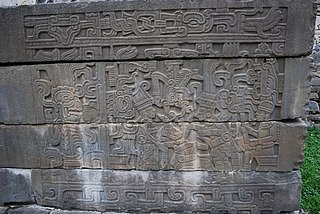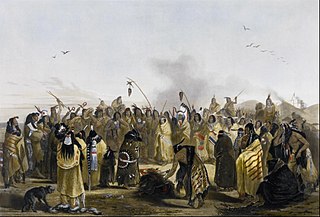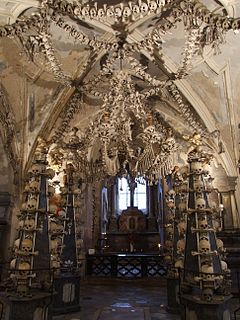 W
WThe practice of human trophy collecting involves the acquisition of human remains. The intent may be to demonstrate dominance over the deceased, such as scalp-taking or forming necklaces of human ears or teeth, or to commemorate the deceased, such as the veneration of the relics of saints. It can be done to prove one's success in battle, or to show off one's power to others. Murderers' collection of their victims' body parts have also been described as a form of trophy-taking; the FBI draws a distinction between souvenirs and trophies in this regard.
 W
WSada Abe was a Japanese geisha and prostitute who murdered her lover, Kichizō Ishida , via erotic asphyxiation on May 18, 1936, and then cut off his penis and testicles and carried them around with her in her kimono. The story became a national sensation in Japan, acquiring mythic overtones, and has been interpreted by artists, philosophers, novelists and filmmakers. Abe was released after serving five years in prison and went on to write an autobiography.
 W
WDuring World War II, some members of the United States military mutilated dead Japanese service personnel in the Pacific theater. The mutilation of Japanese service personnel included the taking of body parts as "war souvenirs" and "war trophies". Teeth and skulls were the most commonly taken "trophies", although other body parts were also collected.
 W
WAnthropodermic bibliopegy is the practice of binding books in human skin. As of May 2019, The Anthropodermic Book Project has examined 31 out of 50 books in public institutions supposed to have anthropodermic bindings, of which 18 have been confirmed as human and 13 have been demonstrated to be animal leather instead.
 W
WIn the period from 1885 to 1908, many well-documented atrocities were perpetrated in the Congo Free State which, at the time, was a colony under the personal rule of King Leopold II of the Belgians. These atrocities were particularly associated with the labour policies used to collect natural rubber for export. Together with epidemic disease, famine, and a falling birth rate caused by these disruptions, the atrocities contributed to a sharp decline in the Congolese population. The magnitude of the population fall over the period is disputed, with modern estimates ranging from 1 million to 15 million deaths.
 W
WRobert Andrew Berdella Jr. was an American serial killer, known as The Kansas City Butcher and The Collector, who kidnapped, raped, tortured, and murdered at least six men between 1984 and 1987 in Kansas City, Missouri after having forced his victims to endure periods of up to six weeks of captivity.
 W
WTheodore Robert Bundy was an American serial killer who kidnapped, raped, and murdered numerous young women and girls during the 1970s and possibly earlier. After more than a decade of denials, he confessed to 30 homicides, committed in seven states between 1974 and 1978. His true victim total is unknown, and believed by some investigators to be higher.
 W
WJeffrey Lionel Dahmer, also known as the Milwaukee Cannibal or the Milwaukee Monster, was a convicted American serial killer and sex offender who committed the murder and dismemberment of 17 men and boys between 1978 and 1991. Many of his later murders involved necrophilia, cannibalism, and the permanent preservation of body parts—typically all or part of the skeleton.
 W
WEdward Theodore Gein, also known as the Butcher of Plainfield or the Plainfield Ghoul, was an American convicted murderer and body snatcher. Gein's crimes, committed around his hometown of Plainfield, Wisconsin, gathered widespread notoriety in 1957 after authorities discovered he had exhumed corpses from local graveyards and fashioned trophies and keepsakes from their bones and skin. Gein also confessed to killing two women: tavern owner Mary Hogan in 1954 and hardware store owner Bernice Worden in 1957.
 W
WThe Head Hunter is a 2018 American fantasy horror film directed by Jordan Downy, who also co-wrote, produced, and edited the film. It stars Norwegian actor Christopher Rygh as the title character, Cora Kaufman, and Aisha Ricketts. The film centers on the title character, who works as a bounty hunter for a local kingdom, all the while he awaits the eventual return of the creature responsible for the murder of his daughter.
 W
WHeadhunting is the practice of taking and preserving a person's head after killing the person. Headhunting was practised in historic times in parts of Europe, East Asia, Oceania, Southeast Asia, South Asia, Mesoamerica, West and Central Africa.
 W
WHeart of Darkness (1899) is a novella by Polish-English novelist Joseph Conrad about a narrated voyage up the Congo River into the Congo Free State in the Heart of Africa. Charles Marlow, the narrator, tells his story to friends aboard a boat anchored on the River Thames. This setting provides the frame for Marlow's story of his obsession with the successful ivory trader Kurtz. Conrad offers parallels between London and Africa as places of darkness.
 W
WDuring the pre-Columbian era, human sacrifice in Maya culture was the ritual offering of nourishment to the gods. Blood was viewed as a potent source of nourishment for the Maya deities, and the sacrifice of a living creature was a powerful blood offering. By extension, the sacrifice of a human life was the ultimate offering of blood to the gods, and the most important Maya rituals culminated in human sacrifice. Generally only high status prisoners of war were sacrificed, with lower status captives being used for labour.
 W
WMost of the ancient civilizations of Mesoamerica such as the Olmec, Maya, Mixtec, Zapotec and Aztec cultures practiced some kind of taking of human trophies during warfare. Captives taken during war would often be taken to their captors' city-states where they would be ritually tortured and sacrificed. These practices are documented by a rich material of iconographic and archaeological evidence from across Mesoamerica.
 W
WThe Jewish skeleton collection was an attempt by the Nazis to create an anthropological display to showcase the alleged racial inferiority of the "Jewish race" and to emphasize the Jews' status as Untermenschen ("sub-humans"), in contrast to the German race, which the Nazis considered to be Aryan Übermenschen. The collection was to be housed at the Anatomy Institute at the Reich University of Strasbourg in the annexed region of Alsace, where the initial preparation of the corpses was performed.
 W
WA kapala is a skull cup used as a ritual implement (bowl) in both Hindu Tantra and Buddhist Tantra (Vajrayana). Especially in Tibet, they are often carved or elaborately mounted with precious metals and jewels.
 W
WThe Karl May Museum is a museum in Radebeul, Germany named after the German author Karl May, containing artifacts from May's life as well as from life on the American frontier and Native American life of that era. It is located in Villa Shatterhand, May's Italian Renaissance home.
 W
WEdmund Emil Kemper III is an American serial killer, serial rapist, cannibal, and necrophile who murdered ten people, including his paternal grandparents and mother. He is noted for his large size, at 6 feet 9 inches (2.06 m), and for his high intellect, possessing an IQ of 145. Kemper was nicknamed the Co-ed Killer, as most of his victims were female college students.
 W
WIlse Koch was married to Karl-Otto Koch, commandant of the Nazi concentration camps Buchenwald (1937–1941) and Majdanek (1941–1943). In 1947, she became one of the first prominent Nazis tried by the U.S. military.
 W
WThe Lampshade: A Holocaust Detective Story from Buchenwald to New Orleans is a 2010 nonfiction book by U.S. author Mark Jacobson. It recounts the attempt to ascertain the origin of a lampshade purportedly made from human skin. It was not until 2012 that DNA testing was sophisticated enough to determine that the shade was likely made from a parchment of cow skin.
 W
WThere are two notable instances of lampshades made from human skin. After World War II it was reported that Nazis had made at least one lampshade from murdered concentration camp inmates: a human skin lampshade was reported to have been displayed by Buchenwald concentration camp commandant Karl-Otto Koch and his wife Ilse Koch, along with multiple other human skin artifacts. Despite myths to the contrary, there were no systematic efforts by the Nazis to make human skin lampshades.
 W
WLittle Crow V was a chief of a band of the Mdewakanton people. The Mdewakanton had been displaced by the Ojibwe/Chippewa from their ancestoral lands around Milacs Lake. They relocated to the east side of the Mississippi river, between Wakan tipi and the Pigseye wetlands, until the area was ceded by treaty. The Kaposia tribe moved across the river from the wetlands to what is now South St. Paul where Little Crow was born. Contemporary authorities now claim that Little Crows name is a mistranslation of his grandfather's, Čhetáŋ Wakhúwa Máni.
 W
WThe Maywand District murders were the murders of at least three Afghan civilians perpetrated by a group of U.S. Army soldiers from June 2009 to June 2010, during the War in Afghanistan. The soldiers, who referred to themselves as the "Kill Team", were members of the 3rd Platoon, Bravo Company, 2nd Battalion, 1st Infantry Regiment, and 5th Brigade, 2nd Infantry Division. They were based at FOB Ramrod in Maiwand, from Kandahar Province of Afghanistan.
 W
WThe Mimizuka , an alteration of the original Hanazuka is a monument in Kyoto, Japan, dedicated to the sliced noses of killed Korean soldiers and civilians as well as Ming Chinese troops taken as war trophies during the Japanese invasions of Korea from 1592 to 1598. The monument enshrines the severed noses of at least 38,000 Koreans killed during Toyotomi Hideyoshi's invasions. The shrine is located just to the west of Toyokuni Shrine, the Shinto shrine honoring Hideyoshi in Kyoto.
 W
WMokomokai, or Toi moko, are the preserved heads of Māori, the indigenous people of New Zealand, where the faces have been decorated by tā moko tattooing. They became valuable trade items during the Musket Wars of the early 19th century.
 W
WNábrók are a pair of pants made from the skin of a dead man or woman, which are believed in Icelandic witchcraft to be capable of producing an endless supply of money. It is highly unlikely these pants ever existed outside of folklore.
 W
WNose tombs are tombs that contain human noses or other body parts that were brought back to Japan as trophies during the Japanese invasions of Korea in the late 16th century.
 W
WScalping is the act of cutting or tearing a part of the human scalp, with hair attached, from the head, and generally occurred in warfare with the scalp being a trophy. Scalp-taking is considered part of the broader cultural practice of the taking and display of human body parts as trophies, and may have developed as an alternative to the taking of human heads, for scalps were easier to take, transport, and preserve for subsequent display. Scalping independently developed in various cultures in both the Old and New Worlds.
 W
WThe Sedlec Ossuary is a small Roman Catholic chapel, located beneath the Cemetery Church of All Saints, part of the former Sedlec Abbey in Sedlec, a suburb of Kutná Hora in the Czech Republic. The ossuary is estimated to contain the skeletons of between 40,000 and 70,000 people, whose bones have, in many cases, been artistically arranged to form decorations and furnishings for the chapel. The ossuary is among the most visited tourist attractions of the Czech Republic, attracting over 200,000 visitors annually.
 W
WA shrunken head is a severed and specially prepared human head that is used for trophy, ritual, or trade purposes.
 W
WA skull cup is a drinking vessel or eating bowl made from an inverted human calvaria that has been cut away from the rest of the skull. The use of a human skull as a drinking cup in ritual use or as a trophy is reported in numerous sources throughout history and among various peoples, and among Western cultures is most often associated with the historically nomadic cultures of the Eurasian Steppe.
 W
WA tzompantli or skull rack is a type of wooden rack or palisade documented in several Mesoamerican civilizations, which was used for the public display of human skulls, typically those of war captives or other sacrificial victims. It is a scaffold-like construction of poles on which heads and skulls were placed after holes had been made in them. Many have been documented throughout Mesoamerica, and range from the Epiclassic through early Post-Classic. In 2017 archeologists announced the discovery of the Huey Tzompantli, with more than 650 skulls, in the archeological zone of the Templo Mayor in Mexico City.